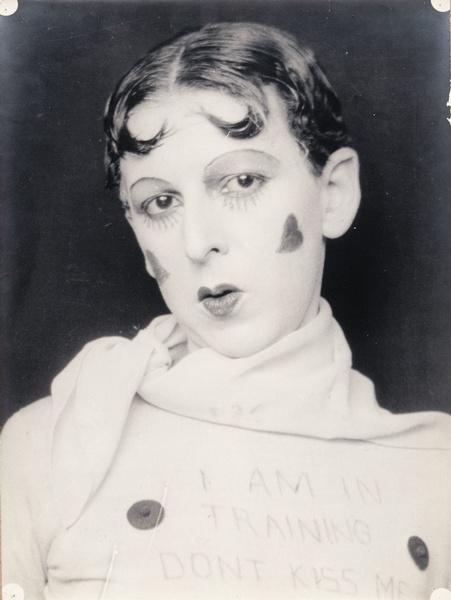
Claude Cahun Self Portrait, 1927. Collection Musée des beaux-arts, Nantes.
In her essay “In Our Glory: Photography and Black Life,” bell hooks uses a story about the relationship she and her two sisters “V.” and “G.” have to a photograph of their father, Veodis Watkins, taken before the girls were born, to set up a general dialogue about the function of snapshot collection displays in African American households and the role these photos play in construction and possession of black identity. Though a very prolific writer who mostly espouses disengagement from the concept of “the enemy,” hooks frequently chooses unusual adversaries (among them rapper Lil’ Kim and filmmaker Wim Wenders). In “In Our Glory” hooks’s rival is her sister “V.”
“V.” initially possesses the photograph of the Watkins, whose emotional unavailability is suggested by the strong reaction the sisters have regarding the photo itself and a spiteful tussle over who will own it; hooks asks for the photo but “V.” sends it to “G.” instead. “G.” is repulsed by the photo’s informality (though hooks suggests other reasons for “G.’s” reaction) and turns it over to hooks with no qualms.
It reveals a great deal about hooks that she uses the opening paragraphs of her essay to both declare her victory in the photo possession scuffle and to identify “V.” as a daddy’s girl and a lesbian in a not-very-sisterly manner. Like another of her targets for vitriol, Madonna, hooks sometimes presents her ideas more palatably in formats such as videos, speeches, and interviews.
In any case hooks, who has said she places black issues at the forefront of her activism agenda behind feminism, (anti-) capitalism, and queer politics, misses and opportunity to further explore allusions to “V’s masculine appearance, attraction to white women, and struggles as a double minority.
hooks values the existence of the family photo collections for their role in creating positive (self) images, but castigates singers who alter their own images and directors who fancifully show angels hanging out at the library. It is difficult to imagine what hooks would have to say about Claude Cahun.
Cahun is generally associated with the French division of surrealism but seems to have been operating on a higher level of ingeniousness even than her companions and collaborator Andre Breton. Photographer, comic, theatrical costume designer, daring anti-Fascist agitator, montage-maker, and poet, Cahun shared her life with a female partner, Suzanne Malherbe, and often appeared in public dressed in men’s clothing. Cahun was pushing boundaries much harder, though, than someone like Rosa Bonheur.
Looking at photos from Cahun’s longtime project, “Heroines,” in which she takes photos of herself dressed as vampires, geishas, weighlifters, Euro dandies, and other characters sometimes exhibiting both male- and female-associated features, Cahun transcends both genders – or any gender – becoming, with her cropped lilac hair and shaved eyebrows, not just her own person but her own creature.
Cahun is cited as influence upon Nan Goldin and Cindy Sherman, other photographers who portray themselves as characters, but I also see Cahun in the film and “film stills” work of Matthew Barney in his Cremaster cycle, appearing as a being freed of specific gender confinements and possessing incredible new traits such as tails, pony ears, feathers, and scales.
 RSS - Posts
RSS - Posts